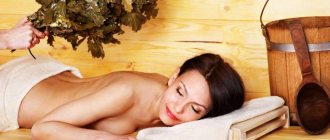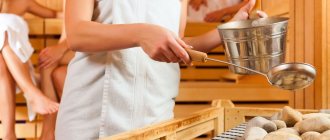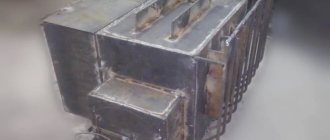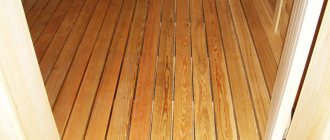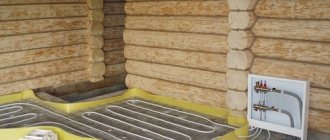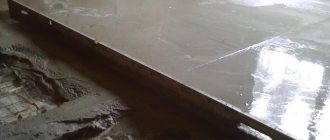The bathhouse is a place for healing and relaxing procedures.
The unique properties of the steam room have been known for a long time - rapid warming up of the body, strengthening the immune system, fighting various diseases. Many bathhouse attendants are interested in a very pressing question - how to make a pleasant smell in the bathhouse in order to relax with benefit for the soul and body?
The simplest and most affordable method of aromatherapy for a bath is to use essential oils, herbal mixtures and tinctures. It is very important to adhere to a strict dosage and use them correctly without harm to human health.
How do bath infusions work?
A distinctive feature of the Russian bath (besides the use of a broom) is the indispensable presence of certain healing aromas in the hot atmosphere of the steam room. They densely saturate the air with intense evaporation of infusions or decoctions of various herbs and plants rich in essential oils. A small amount of infusion is periodically sprinkled on well-heated stones of the sauna stove, or it is poured into special devices - aromatizers. An infusion differs from a decoction in that fresh or dried herbs are simply poured with warm or hot water (according to the recipe) and left for the required time (infused), but the decoction still needs to be boiled over a fire. And in their effects they are almost identical.
The therapeutic effect of infusions is achieved due to the effect of inhalation of the respiratory system with hot vapors of essential oils. Beneficial substances are absorbed into our blood through the lungs and mucous membrane of the nose and throat and, with its help, are distributed throughout the body and delivered to each individual organ. But even this important factor does not limit the usefulness of herbal infusions. No less effective is their external effect on our skin and hair, sometimes helping to overcome quite serious diseases. In Rus', since ancient times, herbal infusions in the steam room have successfully treated not only colds, lungs and bronchi, but also numerous skin diseases: rashes, acne, redness.
Natural essential oils
Aromatherapy in baths and saunas has a beneficial effect on all systems of the human body. Soft and clean steam containing aromatic oils helps prevent and treat various respiratory diseases.
Natural aromatic oils effectively saturate the bath air with beneficial compounds that actively penetrate the human body through the respiratory system and skin.
Essential oils in baths and saunas have the following beneficial characteristics:
They have metabolic, trophic, secretory, training and diaphoretic effects. Used for inhalation, massage, rubbing and baths.
Oils for saunas and baths, depending on their composition, can have a comprehensive healing effect on the body.
- Juniper, anise and dill oils are used for coughs and congestion in the upper respiratory tract.
- Eucalyptus and peppermint oils have a powerful antiseptic effect, so they are used for colds.
- To treat headaches and normalize blood pressure, it is better to use verbena and geranium oil.
- For muscle and emotional stress, you can use geranium, wormwood and lemongrass oil.
- If you lack strength and are tired, it is better to choose rosemary and rose oil.
- To treat skin diseases, it is recommended to use sedative and wound-healing essential oils for baths and saunas - chamomile, sage, valerian, sea buckthorn and pine. In addition, such oils tone and increase skin elasticity.
- Coniferous oil for saunas and baths - spruce, pine, fir and cedar - has a powerful antibacterial and anti-inflammatory effect. Such oils are best used as quick septic tanks for healing damaged skin.
- Air saturated with aromatic oils promotes detoxification and cleansing of the body. The best natural flavors for a bath are lemon, sandalwood and juniper oils.
What herbs are used for infusions
The list of plants whose leaves, flowers or fruits are used for bath infusions is almost endless. If you try to list the weight, you will get a voluminous book (and such a book probably exists). The most common and famous are the following plants and herbs: eucalyptus, juniper, birch, hawthorn, linden, thyme, coltsfoot, motherwort, calendula, yarrow, caraway, St. John's wort, oregano, sage, rowan, oak bark, sweet clover, chamomile, wormwood, lavender, etc.
Each of them can be used separately, but more often they are used in the form of mixtures in various combinations. Species with approximately the same medicinal properties are purposefully selected, trying to obtain a greater total effect than from each component separately. Combinations of herbs with opposite effects on the body, for example, a calming and tonic effect (St. John's wort with wormwood, oregano with cumin, etc.) are excluded. And for the rest - the widest opportunities for your creativity, testing various combinations and proportions, taking into account both medicinal and aromatic properties that are pleasant to you personally.
How does a herbal bath or sauna differ from ordinary baths and saunas?
A relaxation process takes place in a heated room. The healing properties of herbs enhance the positive effect of a spa procedure.
In the center of the room there is a heating element lined with heat-resistant panels that eliminate the risk of burns. It is combined with a water supply system and a container for plants. Water every 5-7 minutes. served over herbs, the air is filled with steam with tonic, soothing or medicinal aromas.
The recreation area is located around the perimeter of the room. These can be benches, shelves or sofas. The width of the sunbeds allows for various types of massage. The herbal sauna is equipped with sound production points. Calm, soothing music complements the atmosphere of relaxation, creating a feeling of relaxation and peace.
The sauna equipment is as automated as possible:
- water supply occurs automatically;
- the specified temperature and humidity parameters are maintained;
- After the session, the room is ventilated, the benches are dried and disinfected.
The container for raw materials is divided into sections. This allows for multi-stage inhalation of herbs at different infusion rates.
Indications
How to choose the most useful and effective bath infusion recipe for yourself?
Let's try to tabulate our version of infusion recipes for a specific physical state of the body and individual diseases.
| Illnesses or disorders in the physical and emotional state | Recommended plant species |
| Hypertensive diseases | Motherwort, hawthorn, wild rosemary |
| Anxiety, overexcitation, insomnia | Oregano, St. John's wort, thyme, hops |
| Loss of strength, apathy, requiring stimulation of internal energy | Wormwood, caraway, rowan |
| Muscle fatigue from hard physical work or sports training | Mint |
| Disorders of the nervous system | Juniper, fir, pine, spruce |
| Diseases of the lungs and bronchi | Linden, coltsfoot, sage |
| Cold | Sweet clover, thyme, eucalyptus |
| Disturbances in the functioning of blood vessels and capillaries, in metabolism, stabilization of blood pressure | Lavender |
| Skin rashes, acne, eczema and other skin inflammations | Oak bark, chamomile, yarrow, poplar, calendula, juniper |
Visit
Duration
The duration of stay in the phytobath varies from person to person, but should not exceed 20 minutes. If you feel discomfort ahead of time, you need to leave the steam room.
Regularity is also important in procedures. You need to visit the herbal bath 3-4 times a week. If this amount is difficult for the body to tolerate, it can be reduced to once a week. The number of sessions is 7-10 days. After this course, you can take a break of two weeks and resume.
Expert opinion
Yaremchuk Svetlana Sergeevna
The owner of a SPA salon knows everything about beauty treatments
The body’s positive reaction will be noticeable after the first course, and the effect will be consolidated during the second course.
Tips for visiting
It is very important to follow the rules to make your stay in the phytobath as comfortable and safe as possible:
- visit the font after a shower and on an empty stomach;
- the body should not be wet, and there is no need to apply cream to the skin, otherwise the beneficial properties of herbs will not penetrate the body through clogged pores;
- You can’t take a shower right away;
- After the procedure, you need to drink a glass of mineral water, juice or tea.
At the end of the procedure, the person is wrapped in a warm robe and allowed to rest for about 30 minutes in a warm and quiet room. After which you can take a warm shower. The ideal end to the procedure is a massage.
Preparation of bath infusions
You prepare the simplest bath infusion, perhaps without thinking about it, when you steam a broom. The water obtained from the steamer can be used with great benefit by spraying it onto the heater and the walls of the steam room. And if you steamed several different brooms at once (for example, birch, oak and juniper), you can create a polyphonic symphony of various aromas in your steam room. But this recipe is good for beginners who are just starting to learn the basics of bath culture. People with experience prefer to prepare bath infusions in advance and specifically for themselves from herbs that meet their medical indications. Nowadays there are a huge variety of herbal mixtures for bath infusions, decoctions and steamings on sale, and many people use just such ready-made preparations. The packages contain indications for use and indicate the method of preparation: what water to take, how much greenery to add, how long to stand, etc. Very convenient and no headaches.
However, especially advanced bath lovers will always prefer their own herbal infusions, prepared with their own hands, over purchased ones. They are considered healthier than store-bought ones (not without reason). What you need to know to prepare herbs (fruits, seeds) for infusions according to all the rules:
- Firstly, it is very important to know the exact timing of harvesting a particular crop; the content of essential oils in the green mass or fruits depends on this;
- Secondly, the raw materials must be thoroughly dried naturally in a dry, shaded and ventilated room (in the attic, in the barn);
- Thirdly, the dried raw materials must be properly crushed: leaves and flowers to a particle size of 0.5 cm, roots, stems and bark to 0.3 cm. Seeds and fruits are pounded with a pestle in a mortar to the size of semolina;
- Fourthly, raw materials should be stored in a cool, dark place in containers with tightly sealed lids. It is preferable to store each type of plant in a separate container, and mix them in the required proportion immediately before preparing the infusion;
- Fifthly, each container should be provided with a label indicating the type of plant and the harvesting date in order to know the expiration date. Herbs, flowers and leaves do not need to be stored for more than 2 years - they will lose their beneficial properties. But the shelf life of seeds, fruits and berries is longer - 4 years.
And now you are going to the bathhouse. Take your wealth out of the jars, measure out the required amount of each ingredient and place it in a gauze bag. Using this bag you will prepare the infusion by placing it in a glass or enamel bowl and pouring hot water. Be sure to cover with a lid to prevent the water from cooling down too quickly. For most herbal infusions, 30 minutes is enough to achieve condition, but there are components (containing fruits, bark, roots, etc.) that need to be infused for several hours. Therefore, the infusion is prepared in advance.
We got ready for the bathhouse in the evening (it also needed to be heated) - in the morning we poured the grass to steep. But you shouldn’t fuss too much in advance: the finished infusion should not be stored for more than two days - it will lose all its usefulness. During this period it is permissible to store it, but only in a cool room and under a lid. And do not forget to strain the infusion through double gauze before drinking. It will be unpleasant if even the smallest particles of grass get on the heater and start to burn. The infusion must be clean. Enjoy your bath! With a light and healthy steam!
What it is
Medicinal herbs have long helped our ancestors cope with various diseases. One of the effective ways to use them is to prepare steaming teas for a bath. This name was given to the powder from dried medicinal herbs. Zaparki is prepared in the summer and stored in fabric bags.
Our ancestors used a slightly different version of steaming - bunches of herbs that were stored suspended in the attic or barn. The herbs were brewed with boiling water, and the broth was splashed onto a hot stove or stones. During evaporation, the air was filled with various substances that produced the desired effect.
Today, it has become inconvenient to store herbs for baths in the form of bunches, so they began to chop them up and package them in small bags. This is how the bathhouse steamer appeared. Unlike infusions, steaming is stored in dried form for quite a long time, and before visiting the bathhouse it is brewed with boiling water.
Herbal teas for steaming
According to the nature of the effect on the body, bath preparations can be divided into 3 types:
- Calming;
- Antiseptic and bactericidal;
- Toning.
Calming collection
Ingredients:
- Valerian roots – 1 part;
- Peppermint herb – 2 parts;
- Motherwort grass – 2 parts.
Preparation:
- Grind and mix the collection components.
- 1 tbsp. L. Pour a glass of boiling water over the mixture.
- Boil over medium heat for 10 minutes.
- Leave for 30 minutes.
- Strain and squeeze.
- Dilute 1/2 cup of infusion in 1 liter of warm water.
As needed, spray 200 ml of diluted infusion onto the stones.
Bactericidal collection
Ingredients in equal parts:
- Yarrow herb;
- sage herb;
- chamomile flowers;
- birch leaves;
- herb with calendula flowers.
Preparation:
- Mix the crushed parts of the collection.
- 1 tbsp. l. pour 200 ml of hot boiled water into the mixture.
- Boil for 10 minutes.
- Leave for 30 minutes.
- Filter the infusion.
- Dilute half a glass of infusion in 1 liter of warm water.
Sprinkle 200 ml of the diluted infusion onto the hot stones. Suitable not only for use during bath procedures, but also before them for herbal disinfection of the room
Tonic collection
Ingredients in equal parts:
- Tansy grass;
- black currant leaves;
- hop cones and shoots.
Preparation:
- 1 tbsp. l. chopped herbs pour 200 ml of boiling water.
- Boil for 10 minutes.
- Leave for half an hour.
- Strain and squeeze.
- Dilute in warm water at the rate of 1/2 cup of infusion per 1 liter.
Deciduous brooms
The main deciduous trees for making bath brooms are birch, linden, and oak.
Birch
The preparation of birch bath brooms begins in the second half of June and continues throughout July. Branches collected early quickly fall off, and when harvested late they become too brittle. Considering the fluctuations in the timing of birch flowering in different areas, you should focus on the fall of catkins. At this time the branches are well suited for cutting.
For brooms, choose twigs with shiny leaves.
Birch leaves contain essential oil, tannins, phytoncides, betulin and betulinic acid, vitamin C.
Steam from a birch broom relieves symptoms of respiratory diseases by expanding the bronchi. Steamed birch leaves adhere tightly to the body, absorbing sweat and cleansing the pores of the skin.
Oak
Oak branches are cut into a broom in August-September.
The active substances of oak are tannins, mainly tannins. They have the ability to bind and precipitate proteins, therefore forming a protective film on damaged tissues. The protective film protects against irritants and accelerates the healing process.
Steaming with an oak broom is useful for inflammatory skin diseases. The essential substances released into the air moderately reduce blood pressure and have a calming effect.
The use of an oak broom is recommended for recovery after physical exertion and for those prone to hypertension.
Linden
Linden branches are harvested during the flowering period. The branches cut at this time will increase their benefits due to flowers - linden blossom, as they are popularly called. Flowering times may vary in different regions, but occur approximately from the end of May to the first half of June.
The main property of linden is diaphoretic. Due to it, the linden broom removes toxins from the body through the skin. The essential substances released during steaming expand the bronchi, thereby facilitating breathing and mucus discharge in case of illness, and also promote normal sleep.
The linden broom is not used for massage. Its main use is to enhance the circulation of hot steam. If the linden branches touch the body, then the movements should be like a light massage.
Questions
Is it possible to take alcohol in a phytobath?
No. It is also not recommended to drink black tea and coffee.
Is it possible to visit a herbal bath if you have urolithiasis?
No. Warming reduces the load on the kidneys and inhibits the process of urine formation, which is not recommended for this disease.
Will I be able to lose weight by visiting a herbal bath?
The herbal bath is undoubtedly useful in the fight against excess weight, but it is only an auxiliary tool. This procedure should be combined with diet, exercise, and massages. Then the result will not be long in coming!
After a herbal bath I have a headache. This is fine?
Feeling unwell is a serious reason to stop the procedure and consult a doctor.
What are the benefits of massage after a herbal bath?
Massage enhances the beneficial properties of this procedure. It promotes even greater relaxation of the body and also tones the muscles and skin.
Using brooms in the bathhouse
The healing effect of bath brooms is expressed in:
- Massage effect. Stimulating with a bath broom improves blood circulation and speeds up metabolism. As a result, nervous and muscle tension is relieved, joint mobility improves, and fat deposits are reduced. After such procedures, the skin pores are cleansed and its condition improves.
- Saturation of the air with useful substances. Many plants contain essential oils and secrete phytoncides - substances that inhibit the growth of microorganisms. When steaming, the release of active substances into the air accelerates, aromatizing it in the room and affecting the body. When essential oil compounds are inhaled, the nervous system is calmed and respiratory activity is stimulated.
- Rinse with infusion after steaming the broom. When plants are steamed, beneficial substances are released into the water. The remaining water is an infusion and can be used for rinsing, washing and foot baths.
Rules for preparing brooms
- The preparation time for bath brooms depends on the type of raw material chosen. On average, cutting is carried out from the second half of June until autumn.
- Branches are cut in the morning in warm and dry weather. Choose trees that grow far from roads and are at least 3 m high. Cut off the lower and middle branches.
- The length of the branches should be from 40 cm to 75 cm. The leaves on them should be held tightly.
Making brooms
- Forming a broom handle. Remove selected, undamaged branches by almost half of the leaves.
- Place the branches tightly and evenly together and shake vigorously several times for a better fit to each other. The number of branches is optional. The broom should not be too thin or heavy.
- For bandaging, it is advisable to use ropes made of natural material. Make the first dressing closer to the end of the handle, tightening it loosely. Make the second dressing at some distance higher and tighten it more tightly.
- After fastening the broom, you need to trim the protruding ends of the branches, making them even. Hang to dry.
Contraindications
Visiting the bathhouse and using this or that decoction is undesirable without consulting a doctor if you suspect pregnancy and have diseases such as:
- cardiovascular diseases;
- varicose veins;
- undiagnosed skin diseases;
- chronic lung diseases;
- diseases of the musculoskeletal system;
- some types of allergies.
Remember: you can steam not only with pleasure, but also with benefit.
Steaming brooms
Steaming bath brooms means soaking them before use to soften them.
Basic methods of steaming brooms:
- Quick steaming for brooms made from deciduous trees. Immediately before use, dip the broom in cold water for a couple of minutes, and then in warm water for the same time.
- Alternate steaming. Soak the broom in warm water until completely moistened. After this, leave it in cold water for 5 minutes, and then immerse it in warm water again. After 2-3 minutes, add hot water and close the lid. Steam in this way for 15 minutes.
- Steam the day before use. The broom should be kept in cold water during the day. Before use, remove, wrap in a damp cloth and place in the warmest place of the bathhouse for 15 minutes - on the top shelf. After this, the broom is ready.
- Steaming for brooms that are overexposed during drying. Dip the dried broom into boiling water for 1 minute, then place it on hot stones or hold it over them for 30 seconds. If, after steam appears, the broom does not become softer, the procedure should be repeated.
Brooms made from fresh branches do not need steaming. Just rinse them under running water and shake.
What to remember
Following simple rules will help you avoid unpleasant moments:
- Before you “succumb” to this or that decoction, find out if any of those steaming are allergic to the plant; and since we ourselves do not always know what we are allergic to, the concentration of the decoction (tincture) should be small at first.
- If aromatic oils are added to the heater water, make sure that they are essential oils and not fatty ones. Base oil, even if it is flavored, burns when it comes into contact with hot stones, releasing an unpleasant odor and fumes.
- Tonic and stimulating herbs and herbs should be used only in the first half of the day. At night, it is better to take something soothing to promote relaxation.
- Take special care with medicinal plants. Remember the contraindications! Example: for those with low blood pressure, it is better not to use mint, rowan, hawthorn (read about its use here), mistletoe, and barberry. If you are prone to high blood pressure, avoid tansy, immortelle, and St. John's wort.
- When using decoctions and tinctures for a bath, choose herbs with the same effect; For example, you should not mix stimulants and sedatives.
And another tip - fragrant decoctions and bath tinctures are very pleasant to use for dousing after a steam room.
